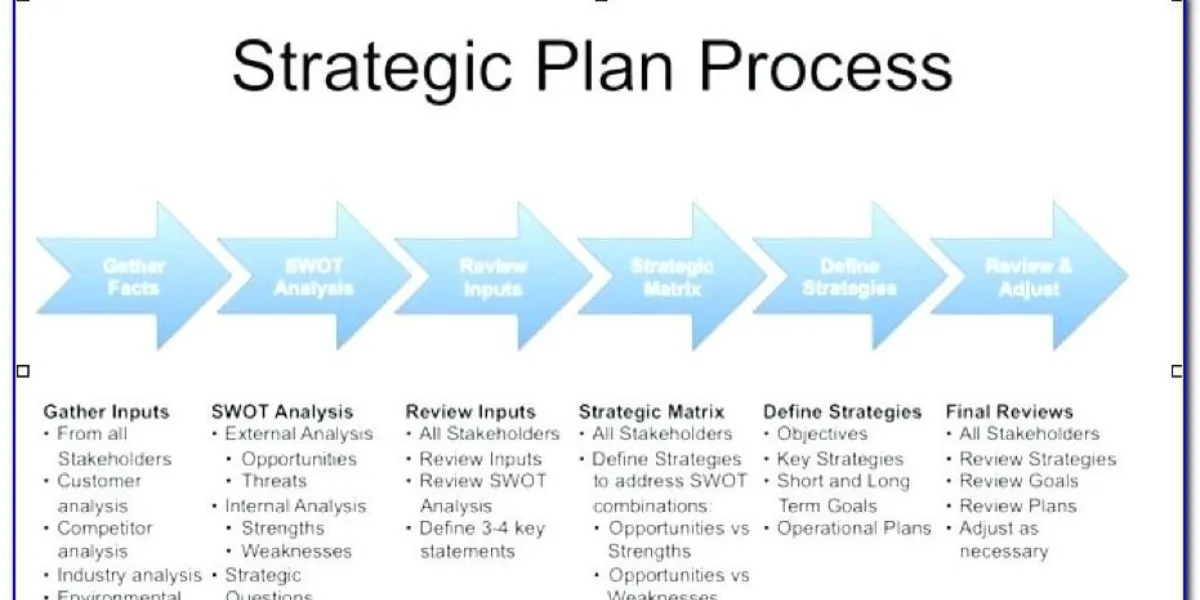Canada’s New Lending Regulations
New Lending Rules In Canada financial landscape has experienced significant changes, particularly in the realm of lending. The introduction of new lending regulations is a pivotal move by the government and financial authorities to ensure stability, protect consumers, and promote responsible lending practices.
These new regulations are designed to address various economic and market challenges, including rising household debt, fluctuating real estate prices, and the need for more rigorous financial oversight. By tightening lending criteria and implementing more stringent checks, the aim is to reduce the risk of defaults and maintain the integrity of the financial system.
Key components of these regulations include more thorough income verification processes, stricter credit score requirements, and enhanced scrutiny of borrowers’ financial health. Additionally, there are new guidelines for mortgage stress testing, which assess a borrower’s ability to withstand interest rate increases. These measures are expected to impact both lenders and borrowers, leading to a more cautious and measured approach to lending and borrowing.
For borrowers, these changes mean that obtaining loans might become more challenging, as they will need to demonstrate stronger financial stability and resilience. For lenders, the regulations require more comprehensive risk assessments and compliance with new standards, which may affect their lending strategies and business models.
Overall, the introduction of Canada’s new lending regulations marks a significant shift towards a more secure and sustainable financial environment. It reflects the ongoing efforts of policymakers to safeguard the economy and ensure that lending practices align with the long-term financial well-being of individuals and the country as a whole.
Key Changes in the Canadian Lending Framework

The Canadian lending framework has undergone several significant modifications aimed at promoting financial stability, protecting consumers, and ensuring responsible lending practices. Here are the key changes:
Stricter Mortgage Stress Tests
Objective: To ensure borrowers can afford their mortgages even if interest rates rise.
Details: Borrowers must qualify at a higher interest rate than the one they are being offered. This stress test applies to both insured and uninsured mortgages.
Enhanced Income Verification
Objective: To accurately assess a borrower’s ability to repay their loan.
Details: Lenders must conduct more rigorous checks on a borrower’s income, including employment verification and analysis of income stability over time.
Tighter Loan-to-Value (LTV) Ratios
Objective: To limit the amount of money that can be borrowed relative to the value of the property.
Details: Maximum LTV ratios have been reduced, requiring larger down payments for property purchases.
Increased Minimum Credit Score Requirements
Objective: To ensure borrowers have a strong credit history and are less likely to default.
Details: Lenders are raising the minimum credit score needed to qualify for various types of loans, including mortgages.
Changes to the Home Buyers’ Plan (HBP)
Objective: To make home ownership more accessible while maintaining financial prudence.
Details: Adjustments to the HBP, which allows first-time home buyers to withdraw from their RRSPs, have been made to better align with current economic conditions.
New Guidelines for Variable and Fixed-Rate Mortgages
Objective: To provide clearer guidelines and protections for borrowers choosing between variable and fixed-rate options.
Details: Lenders must provide detailed information and scenarios to help borrowers understand the potential impacts of rate changes.
Tighter Regulations on Home Equity Lines of Credit (HELOCs)
Objective: To prevent over-leveraging and ensure sustainable borrowing.
Details: More stringent rules on the amount that can be borrowed against home equity and closer monitoring of HELOC usage.
Regulations on Foreign Buyers and Investment Properties
Objective: To curb speculative investments and stabilize housing markets.
Details: New taxes and restrictions on foreign buyers and tighter lending criteria for investment properties.
Increased Capital Requirements for Banks
Objective: To ensure financial institutions have a stronger capital base to withstand economic shocks.
Details: Banks are required to hold more capital reserves, impacting their lending capacities and risk management strategies.
Consumer Protection Measures
Objective: To enhance transparency and fairness in lending practices.
Details: New regulations mandate clearer disclosure of loan terms, fees, and penalties to ensure borrowers are fully informed.
These changes reflect a comprehensive approach to fortifying the Canadian lending framework. They aim to balance the need for accessible credit with the imperative of maintaining economic stability and preventing financial crises. Both lenders and borrowers must adapt to these new rules, which ultimately seek to foster a healthier financial environment in Canada.
Impact of New Lending Rules on Homebuyers

The introduction of new lending rules in Canada has significant implications for homebuyers, affecting their ability to secure mortgages, the amount they can borrow, and the overall cost of purchasing a home. Here are the key impacts:
Stricter Mortgage Qualification Criteria
Impact: Homebuyers must now pass more rigorous mortgage stress tests.
Details: These tests require borrowers to qualify at an interest rate higher than their actual mortgage rate, ensuring they can handle potential rate increases. This means some homebuyers may qualify for smaller mortgages than before or may not qualify at all.
Larger Down Payments Required
Impact: The reduction in maximum loan-to-value (LTV) ratios necessitates larger down payments.
Details: Buyers may need to save more money upfront, which can delay their ability to purchase a home. This particularly affects first-time buyers who may have less savings.
Enhanced Income and Credit Verification
Impact: Homebuyers face more thorough checks on their income and creditworthiness.
Details: Lenders now require detailed verification of employment and income stability, as well as higher credit scores. Borrowers with irregular incomes or lower credit scores may find it harder to qualify for a mortgage.
Increased Borrowing Costs
Impact: Higher capital requirements for banks and stricter lending regulations can lead to increased borrowing costs.
Details: Lenders may pass on these costs to borrowers in the form of higher interest rates or fees, making mortgages more expensive.
Reduced Purchasing Power
Impact: The combination of stricter stress tests and higher down payment requirements reduces the amount homebuyers can borrow.
Details: This limits their purchasing power, potentially forcing them to look for less expensive properties or reconsider their homebuying plans altogether.
Greater Emphasis on Financial Stability
Impact: Homebuyers need to demonstrate stronger financial health.
Details: With more stringent checks on financial stability, buyers must ensure their finances are in order. This includes having a stable income, a good credit score, and sufficient savings.
Potential Market Cooling Effect
Impact: The new rules could lead to a cooling effect in the housing market.
Details: By making it harder to qualify for a mortgage, demand for housing may decrease, which could stabilize or even lower housing prices in some markets.
Challenges for First-Time Buyers
Impact: First-time buyers may face more significant hurdles in entering the housing market.
Details: Higher down payments and stricter qualifications mean that new buyers must save more and have stronger financial profiles, making homeownership less accessible.
Increased Competition for Affordable Housing
Impact: More stringent lending rules could lead to increased competition for lower-priced homes.
Details: As buyers adjust their budgets to meet new lending criteria, the demand for affordable housing may rise, leading to increased competition and potential bidding wars in this segment.
Incentives and Assistance ProgramsImpact: In response to the stricter rules, more homebuyers might seek out government assistance programs.
Details: Programs like the First-Time Home Buyer Incentive may become more popular as buyers look for ways to ease the financial burden and qualify for mortgages under the new regulations.
In summary, the new lending rules in Canada present several challenges for homebuyers, requiring them to demonstrate greater financial stability and often limiting their borrowing capacity. While these changes aim to ensure responsible lending and protect the broader economy, they also necessitate careful planning and preparation for prospective homebuyers.
How Canadian Banks Are Adapting to New Lending Policies

The new lending policies introduced in Canada have necessitated significant adjustments by banks to align with stricter regulatory requirements and ensure continued compliance. Here’s how Canadian banks are adapting to these changes:
Enhancing Risk Management Practices
Adaptation: Banks are implementing more robust risk assessment and management frameworks.
Details: This includes stricter evaluation of borrowers’ creditworthiness, comprehensive stress testing, and better monitoring of loan portfolios to identify potential risks early.
Strengthening Capital Reserves
Adaptation: Banks are increasing their capital reserves to meet higher regulatory capital requirements.
Details: This ensures that they have a stronger financial buffer to withstand economic shocks and maintain stability in their lending activities.
Implementing Advanced Technology
Adaptation: Banks are leveraging advanced technology and data analytics to improve the accuracy and efficiency of their lending processes.
Details: Automated systems for income verification, credit scoring, and risk assessment help streamline loan approval processes while ensuring compliance with new regulations.
Adjusting Loan Products and Terms
Adaptation: Banks are modifying their loan products and terms to align with new lending rules.
Details: This includes offering more conservative loan-to-value (LTV) ratios, adjusting interest rates, and revising the terms of variable and fixed-rate mortgages to ensure they meet regulatory standards.
Focusing on Financial Education for Borrowers
Adaptation: Banks are increasing their efforts to educate borrowers about the new lending rules and how they impact their mortgage applications.
Details: Providing resources, seminars, and consultations helps borrowers understand the requirements and prepare accordingly, thereby improving their chances of loan approval.
Expanding Mortgage Stress Testing
Adaptation: Banks are conducting more rigorous mortgage stress tests for borrowers.
Details: These stress tests ensure that borrowers can afford their mortgages even in scenarios where interest rates rise significantly, reducing the risk of defaults.
Collaborating with Regulators
Adaptation: Banks are working closely with regulators to ensure ongoing compliance and to stay updated on any further changes to lending policies.
Details: Regular communication and collaboration with regulatory bodies help banks to quickly adapt to new requirements and provide feedback on the practical implications of these rules.
Refining Underwriting Standards
Adaptation: Banks are refining their underwriting standards to comply with more stringent lending criteria.
Details: This involves detailed assessments of borrowers’ financial health, including income stability, debt levels, and overall financial behavior.
Introducing More Conservative Lending Practices
Adaptation: Banks are adopting more conservative lending practices to mitigate risk.
Details: This includes being more selective about approving loans, particularly for high-risk borrowers, and focusing on lower-risk segments.
Offering New Financial Products
Adaptation: Banks are developing and offering new financial products tailored to the new regulatory environment.
Details: These products may include options that help borrowers meet the new requirements, such as loans with built-in stress test buffers or special savings plans to assist with down payment accumulation.
Overall, Canadian banks are proactively adapting to the new lending policies through a combination of enhanced risk management, technological advancements, and a greater focus on borrower education and financial health. These measures are aimed at maintaining stability and compliance while continuing to serve the borrowing needs of their customers effectively.
Small Business Lending: Navigating the New Rules

The new lending regulations in Canada not only affect individual borrowers but also have significant implications for small businesses seeking financing. Here’s how small businesses can navigate these new rules and what they need to know:
Stricter Eligibility Criteria
Impact: Small businesses must meet more stringent eligibility requirements to qualify for loans.
Details: Lenders are now more thorough in assessing a business’s creditworthiness, including a detailed examination of financial statements, credit history, and business plans.
Enhanced Financial Documentation Requirements
Impact: Small businesses must provide more comprehensive financial documentation.
Details: This includes up-to-date financial statements, detailed cash flow projections, and robust business plans. Accurate and transparent financial records are critical for meeting lender requirements.
Higher Credit Score Thresholds
Impact: Small businesses and their owners may need higher credit scores to qualify for loans.
Details: Lenders are placing more emphasis on the credit scores of business owners and the business itself, requiring stronger credit histories to mitigate risk.
Increased Scrutiny of Business Plans
Impact: Business plans are subject to more rigorous scrutiny.
Details: Lenders are looking for well-developed, realistic business plans that clearly outline how the loan will be used, projected revenue, and strategies for growth and repayment.
More Conservative Loan Amounts
Impact: The amount businesses can borrow may be reduced.
Details: Lenders are adopting more conservative lending practices, offering smaller loan amounts relative to the value and stability of the business. This means businesses may need to seek additional funding sources.
Higher Capital Requirements
Impact: Small businesses may need to demonstrate higher levels of capital reserves.
Details: Lenders want assurance that businesses have sufficient capital to weather financial downturns, leading to higher reserve requirements.
Increased Interest Rates and Fees
Impact: Borrowing costs for small businesses may rise.
Details: With higher capital requirements for banks and stricter lending criteria, lenders may pass on these costs to borrowers through increased interest rates and fees.
Focus on Cash Flow Management
Impact: Effective cash flow management is crucial.
Details: Lenders are paying closer attention to a business’s cash flow management practices, emphasizing the importance of consistent and positive cash flow for loan approval.
Alternative Financing Options
Impact: Small businesses may need to explore alternative financing options.
Details: With traditional bank loans becoming harder to obtain, businesses might consider other sources such as credit unions, online lenders, crowdfunding, and government grants or loans designed to support small businesses.
Enhanced Relationship with Lenders
Impact: Building strong relationships with lenders becomes more important.
Details: Ongoing communication and a solid relationship with financial institutions can help businesses navigate the lending process more effectively. This includes understanding lender expectations and receiving guidance on improving financial health and loan readiness.
Steps for Small Businesses to Navigate the New Rules
Prepare Comprehensive Financial Documentation
Maintain up-to-date and detailed financial records, including balance sheets, income statements, and cash flow projections.
Strengthen Credit Profiles
Work on improving both personal and business credit scores by managing debts responsibly and ensuring timely payments.
Develop Robust Business Plans
Create thorough, realistic business plans that clearly articulate goals, strategies, and financial projections.
Manage Cash Flow Effectively
Implement strong cash flow management practices to ensure consistent liquidity and financial stability.
Explore Diverse Financing Options
Consider various financing sources beyond traditional bank loans, including alternative lenders and government programs.
Build Strong Relationships with Lenders
Cultivate good relationships with financial institutions, maintaining open communication and seeking their advice and support.
By understanding and adapting to these new lending rules, small businesses can better position themselves to secure the financing they need to grow and thrive in a more regulated financial environment.
Stricter Lending Criteria: What Borrowers Should Prepare For

The implementation of stricter lending criteria in Canada has a significant impact on borrowers, necessitating thorough preparation to meet the new standards. Here’s what borrowers should be ready for:
Higher Credit Score Requirements
Impact: Borrowers need to have stronger credit scores to qualify for loans.
Details: Lenders are raising the minimum credit score thresholds, meaning borrowers with lower scores might find it more challenging to get approved. Maintaining a high credit score through responsible credit use and timely payments is essential.
More Comprehensive Income Verification
Impact: Borrowers must provide detailed proof of income.
Details: Lenders now require more rigorous documentation, including pay stubs, tax returns, and bank statements, to verify income stability and sufficiency.
Enhanced Debt-to-Income Ratio Analysis
Impact: Borrowers need to demonstrate a lower debt-to-income ratio.
Details: Lenders assess the ratio of debt to income to ensure borrowers can manage new debt responsibly. Keeping debts low relative to income is crucial for meeting this criterion.
Larger Down Payments
Impact: Borrowers may need to make larger down payments, especially for mortgages.
Details: With reduced loan-to-value (LTV) ratios, borrowers must save more for down payments, often requiring a higher percentage of the property’s purchase price upfront.
More Detailed Financial Assessments
Impact: Lenders conduct in-depth evaluations of borrowers’ financial health.
Details: This includes scrutinizing savings, investments, and overall financial behavior. Borrowers should ensure their financial records are accurate and reflect good financial management.
Stricter Employment Verification
Impact: Employment stability is closely examined.
Details: Lenders look for steady employment history and may require verification from employers. Borrowers with consistent and long-term employment are viewed more favorably.
More Conservative Loan Amounts
Impact: Borrowers might qualify for smaller loan amounts.
Details: Lenders are adopting a more conservative approach, reducing the amount they are willing to lend relative to the borrower’s income and financial stability.
Rigorous Mortgage Stress Tests
Impact: Homebuyers must pass stringent mortgage stress tests.
Details: Borrowers need to qualify at higher interest rates than their actual mortgage rate to ensure they can handle potential rate increases, reducing the risk of default.
Increased Documentation for Self-Employed Borrowers
Impact: Self-employed individuals face more rigorous scrutiny.
Details: Lenders require extensive documentation of income and business health, including financial statements and tax returns. Self-employed borrowers should prepare detailed and accurate financial records.
Higher Capital and Reserve Requirements for Lenders
Impact: Borrowers may experience higher borrowing costs.
Details: With lenders required to hold more capital reserves, the increased costs may be passed on to borrowers in the form of higher interest rates or fees.
Preparation Strategies for Borrowers
Improve Credit Scores
Regularly check and improve credit scores by paying bills on time, reducing debt, and correcting any errors on credit reports.
Organize Financial Documentation
Gather all necessary financial documents, including income proof, tax returns, and bank statements, to streamline the application process.
Increase Savings
Save for larger down payments and ensure sufficient funds are available to cover additional costs and fees.
Reduce Debt
Pay down existing debts to improve the debt-to-income ratio, making it easier to qualify for new loans.
Stabilize Employment
Maintain consistent employment and avoid significant job changes before applying for a loan to show stability.
Understand and Plan for Mortgage Stress Tests
Be prepared for mortgage stress tests by understanding potential rate increases and ensuring the ability to meet higher payments.
Seek Professional Advice
Consult with financial advisors or mortgage brokers to navigate the new lending landscape and find the best loan options.
By preparing for these stricter lending criteria, borrowers can improve their chances of securing the loans they need and successfully navigating the more challenging lending environment.
The Role of Credit Scores Under Canada’s New Lending Regulations

Credit scores have become even more crucial under Canada’s new lending regulations, influencing the ability of individuals and businesses to secure loans. Here’s a detailed explanation of their role and the implications for borrowers:
Higher Credit Score Thresholds
Impact: Borrowers must meet higher credit score requirements to qualify for loans.
Details: Lenders have raised the minimum acceptable credit scores, meaning borrowers need stronger credit histories to secure approval. A higher score indicates lower risk to lenders, increasing the likelihood of loan approval.
Determining Loan Eligibility
Impact: Credit scores play a key role in determining loan eligibility.
Details: Lenders use credit scores as a primary criterion to assess a borrower’s creditworthiness. A good credit score can make it easier to qualify for various types of loans, including mortgages, personal loans, and business financing.
Influencing Interest Rates
Impact: Credit scores affect the interest rates offered to borrowers.
Details: Borrowers with higher credit scores are often offered lower interest rates, as they are considered less risky. Conversely, those with lower scores may face higher rates, increasing the overall cost of borrowing.
Impact on Loan Amounts
Impact: Credit scores can influence the amount a borrower is eligible to borrow.
Details: Lenders may offer larger loan amounts to borrowers with higher credit scores, reflecting their confidence in the borrower’s ability to repay. Lower scores might result in smaller loan offers.
Determining Loan Terms
Impact: Credit scores can affect the terms and conditions of loans.
Details: Borrowers with high credit scores are more likely to receive favorable loan terms, such as longer repayment periods and lower fees. Those with lower scores might face stricter terms and higher fees.
Evaluation of Creditworthiness
Impact: Credit scores are central to lenders’ evaluation of a borrower’s overall creditworthiness.
Details: Lenders consider credit scores alongside other factors like income, employment history, and debt levels to make informed lending decisions. A high credit score strengthens a borrower’s overall profile.
Mitigating Default Risk
Impact: Credit scores help lenders mitigate the risk of defaults.
Details: By focusing on borrowers with higher credit scores, lenders reduce the likelihood of defaults, as these borrowers have demonstrated reliable credit behavior in the past.
Enhancing Financial Stability
Impact: Emphasis on credit scores promotes financial stability in the lending market.
Details: Encouraging borrowers to maintain high credit scores fosters responsible financial behavior, contributing to overall economic stability and reducing the risk of financial crises.
Steps Borrowers Can Take to Improve Their Credit Scores
Timely Payments
Strategy: Always pay bills and loan installments on time.
Impact: Timely payments are the most significant factor in maintaining and improving credit scores.
Reduce Debt Levels
Strategy: Pay down existing debts and avoid accumulating new debt.
Impact: Lowering debt levels reduces the debt-to-credit ratio, positively impacting credit scores.
Monitor Credit Reports
Strategy: Regularly check credit reports for errors and dispute inaccuracies.
Impact: Ensuring the accuracy of credit reports helps maintain a true reflection of creditworthiness.
Limit Credit Inquiries
Strategy: Minimize the number of new credit applications.
Impact: Each credit inquiry can slightly lower credit scores, so limiting applications helps maintain higher scores.
Maintain Long Credit Histories
Strategy: Keep older credit accounts open and in good standing.
Impact: A longer credit history positively influences credit scores, showing a track record of responsible credit use.
Use Credit Responsibly
Strategy: Use credit cards and other credit lines prudently, keeping balances low.
Impact: Responsible use of credit demonstrates good financial management, boosting credit scores.
By understanding and actively managing their credit scores, borrowers can better navigate the stricter lending environment in Canada. High credit scores not only increase the chances of loan approval but also lead to more favorable borrowing terms, ultimately supporting financial stability and growth.
Expert Opinions on Canada’s Revised Lending Laws
Canada’s revised lending laws have elicited a wide range of reactions from financial experts, policymakers, and industry stakeholders. These expert opinions provide valuable insights into the potential benefits and challenges posed by the new regulations. Here’s a comprehensive look at these perspectives:
Enhanced Financial Stability
Opinion: Many experts believe the revised lending laws will enhance financial stability.
Details: By implementing stricter criteria and stress tests, the regulations aim to reduce the risk of defaults and prevent economic shocks. Experts argue that these measures can protect the financial system from crises similar to the 2008 financial meltdown.
Protection for Consumers
Opinion: Consumer protection is a significant focus of the new laws.
Details: Experts highlight that stricter lending criteria protect borrowers from taking on more debt than they can afford. This helps in promoting responsible borrowing and financial literacy among consumers.
Potential Impact on Housing Market
Opinion: There are mixed opinions on the impact of the new laws on the housing market.
Details: Some experts believe the regulations will cool down overheated housing markets, making homes more affordable in the long run. Others worry that the stricter criteria might make it harder for first-time buyers to enter the market, potentially reducing overall demand.
Challenges for Small Businesses
Opinion: The new laws pose significant challenges for small businesses seeking loans.
Details: Financial analysts point out that stricter lending requirements could limit access to capital for small businesses, hindering their growth and innovation. This could have broader economic implications, particularly in sectors heavily reliant on small enterprises.
Impact on Lending Institutions
Opinion: Experts discuss the increased compliance burden on lending institutions.
Details: Banks and financial institutions need to invest in new technologies and processes to comply with the revised regulations. While this could lead to higher operational costs, it is also seen as a necessary step to maintain the integrity and stability of the financial system.
Economic Growth Considerations
Opinion: There are concerns about the potential impact on economic growth.
Details: Some economists argue that stricter lending criteria could slow down economic growth by reducing the availability of credit for consumers and businesses. This might affect consumer spending and business investments, key drivers of economic activity.
Long-Term Benefits
Opinion: The long-term benefits are widely acknowledged.
Details: Despite short-term challenges, experts believe that the revised laws will lead to a more resilient financial system. By promoting sustainable lending practices, these regulations aim to create a healthier economic environment over time.
Technological Adaptation
Opinion: The role of technology in adapting to new regulations is emphasized.
Details: Financial technology experts highlight the need for advanced data analytics and automation to comply with the new laws efficiently. This technological adaptation can also improve the accuracy of risk assessments and lending decisions.
Global Competitiveness
Opinion: Some experts discuss the implications for Canada’s global competitiveness.
Details: By adopting stringent lending standards, Canada positions itself as a financially prudent and stable economy, potentially attracting international investors. However, there is also concern that overly restrictive policies might deter foreign investments.
Public Perception and Trust
Opinion: Public perception and trust in the financial system are crucial.
Details: Experts believe that transparent implementation of the new laws can enhance public trust in financial institutions. Clear communication about the benefits and reasons for these regulations can help in gaining public support.
The revised lending laws in Canada represent a significant shift towards more rigorous financial oversight and consumer protection. While experts acknowledge the potential short-term challenges, there is a consensus that these measures are essential for long-term financial stability and resilience. By understanding and addressing the diverse perspectives on these regulations, stakeholders can navigate the new financial landscape more effectively.
Potential Economic Implications of Canada’s New Lending Rules
Canada’s new lending rules, designed to enhance financial stability and promote responsible borrowing, have wide-ranging economic implications. These impacts are felt across various sectors, influencing consumer behavior, business operations, and overall economic growth. Here’s a detailed look at the potential economic implications:
Cooling of the Housing Market
Impact: The new rules are expected to slow down the housing market.
Details: Stricter mortgage qualification criteria and higher down payment requirements may reduce the number of potential homebuyers, leading to lower demand for housing. This could stabilize or decrease housing prices, particularly in overheated markets.
Reduced Consumer Spending
Impact: Consumer spending may decrease as a result of the new regulations.
Details: With more stringent lending criteria, fewer consumers may qualify for loans or credit cards, limiting their purchasing power. This can lead to reduced spending on big-ticket items like cars, appliances, and home renovations, potentially slowing down retail and related industries.
Impact on Small Businesses
Impact: Small businesses might face greater difficulties in obtaining financing.
Details: Stricter lending rules mean that small businesses, which often rely on loans for growth and operations, may find it harder to access necessary funds. This could slow down business expansion, innovation, and job creation, impacting the broader economy.
Changes in Borrowing Costs
Impact: Borrowing costs may increase for consumers and businesses.
Details: With lenders facing higher capital requirements and compliance costs, these expenses may be passed on to borrowers through higher interest rates and fees. This could increase the overall cost of borrowing, affecting financial decisions.
Increased Savings Rates
Impact: The new rules might encourage higher savings rates among consumers.
Details: As borrowing becomes more challenging and expensive, consumers may opt to save more to meet larger down payment requirements and ensure financial stability. Higher savings rates can have a mixed impact on the economy, potentially reducing immediate consumption but increasing long-term financial security.
Shift in Investment Patterns
Impact: Investment patterns may shift in response to the new lending rules.
Details: Investors might redirect funds from the housing market to other sectors, such as technology, healthcare, or renewable energy, seeking better returns. This shift can diversify the economy and foster growth in emerging industries.
Stabilization of the Financial System
Impact: The financial system may become more stable and resilient.
Details: By enforcing stricter lending standards, the risk of defaults and financial crises is reduced. This can lead to a more stable financial environment, benefiting the economy in the long run.
Potential Slowdown in Economic Growth
Impact: Overall economic growth could experience a short-term slowdown.
Details: With reduced borrowing and spending, economic growth might decelerate in the short term. However, the long-term benefits of a more stable and sustainable financial system could outweigh these initial slowdowns.
Impact on Employment
Impact: Employment rates might be affected by changes in lending practices.
Details: If small businesses struggle to obtain financing, it could lead to reduced hiring or even layoffs. Conversely, stability in the housing market might preserve jobs in construction and real estate over time.
Influence on Inflation
Impact: The new lending rules might influence inflation rates.
Details: Reduced consumer spending and borrowing could lead to lower demand for goods and services, potentially exerting downward pressure on inflation. However, higher borrowing costs could offset this by increasing prices for certain products and services.
Canada’s new lending rules are poised to create a more secure and sustainable financial environment, though they come with a range of economic implications. From cooling the housing market and altering consumer spending habits to impacting small businesses and influencing inflation, these changes are expected to shape the economic landscape in complex ways. While there may be short-term challenges, the long-term goal is to foster a stable and resilient economy. Understanding these potential implications can help policymakers, businesses, and consumers navigate the new financial terrain more effectively.
Future Outlook: Evolving Trends in Canadian Lending Practices
The future of Canadian lending practices is shaped by ongoing regulatory changes, technological advancements, economic trends, and shifting consumer behaviors. Understanding these evolving trends provides insights into the trajectory of lending practices in Canada. Here’s a comprehensive exploration of the future outlook:
Digital Transformation
Trend: Continued digitization of lending processes and services.
Details: Banks and financial institutions are expected to further invest in digital platforms, streamlining loan applications, approvals, and disbursements. Digital-first approaches enhance convenience for borrowers and improve operational efficiency for lenders.
Personalized Lending Solutions
Trend: Increasing emphasis on personalized lending products.
Details: Lenders are leveraging data analytics and AI to tailor loan offerings to individual borrower needs. Personalized solutions, such as customized interest rates and repayment terms, enhance customer satisfaction and loyalty.
Greater Regulatory Scrutiny
Trend: Heightened regulatory oversight and compliance requirements.
Details: Regulators are expected to implement stricter lending regulations to safeguard financial stability and consumer protection. Lenders must adapt to evolving compliance standards, which may impact lending practices and risk management strategies.
Shift Towards Sustainable Finance
Trend: Growing focus on environmental, social, and governance (ESG) factors in lending decisions.
Details: Lenders are integrating sustainability criteria into their lending practices, favoring investments in environmentally friendly projects and socially responsible initiatives. Sustainable finance principles drive positive impact while mitigating long-term risks.
Innovations in Credit Scoring
Trend: Advancements in alternative credit scoring methods.
Details: Fintech startups and traditional lenders are exploring non-traditional data sources, such as utility payments and social media activity, to assess creditworthiness. Alternative credit scoring enables greater financial inclusion and expands access to credit for underserved populations.
Rise of Peer-to-Peer Lending
Trend: Increasing popularity of peer-to-peer (P2P) lending platforms.
Details: P2P lending connects borrowers directly with investors, bypassing traditional financial intermediaries. These platforms offer competitive rates and streamlined processes, disrupting traditional lending models and fostering a more decentralized approach to borrowing.
Continued Mortgage Market Evolution
Trend: Evolution of mortgage products and terms.
Details: Mortgage lenders are innovating with flexible mortgage options, such as adjustable-rate mortgages (ARMs) and hybrid loans. Additionally, there is a growing demand for green mortgages, which incentivize energy-efficient home upgrades.
Expansion of Open Banking
Trend: Adoption of open banking frameworks.
Details: Open banking initiatives enable secure data sharing between financial institutions and third-party providers, empowering consumers to access a broader range of financial products and services. Enhanced data access promotes competition and innovation in lending.
Focus on Financial Inclusion
Trend: Efforts to promote financial inclusion and accessibility.
Details: Lenders are implementing initiatives to serve marginalized communities and underbanked populations. Targeted programs, financial education initiatives, and responsible lending practices aim to bridge the gap and promote economic empowerment.
Integration of Blockchain Technology
Trend: Integration of blockchain technology in lending processes.
Details: Blockchain-based lending platforms offer increased transparency, security, and efficiency in loan origination, underwriting, and securitization. Smart contracts automate loan agreements, reducing the need for intermediaries and minimizing transaction costs.
The future of Canadian lending practices is characterized by innovation, regulation, and a commitment to meet evolving consumer needs. From digital transformation and personalized lending solutions to sustainable finance and blockchain integration, lenders are poised to embrace emerging trends and technologies. By adapting to these evolving trends, Canadian lenders can enhance efficiency, mitigate risks, and better serve the diverse borrowing needs of consumers and businesses.
Click here for more visited Posts!





Join The Discussion